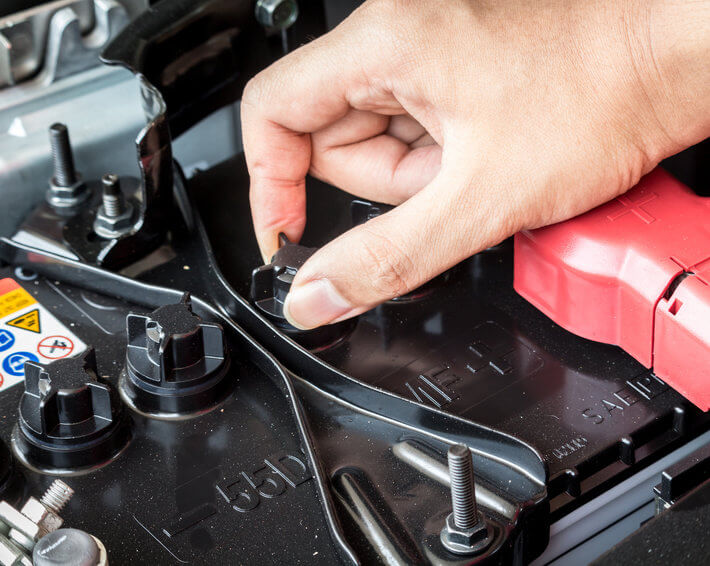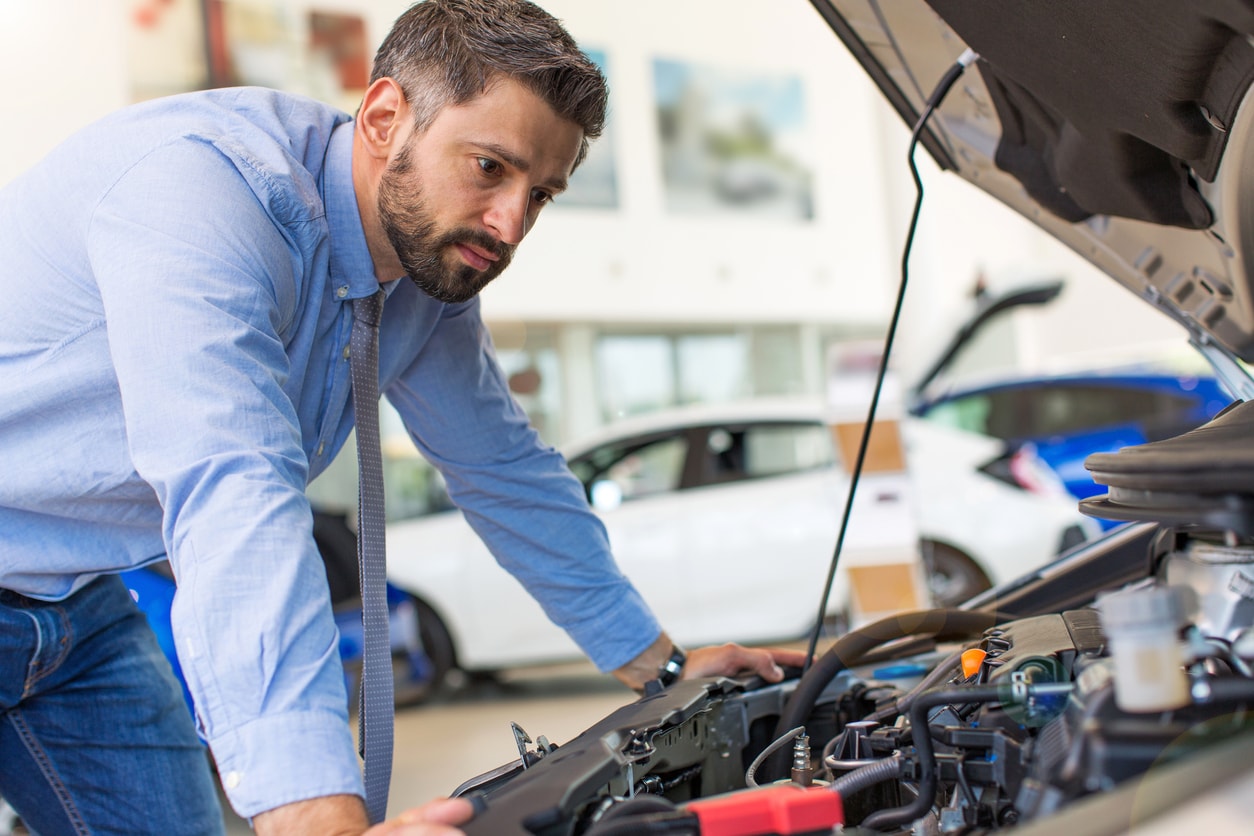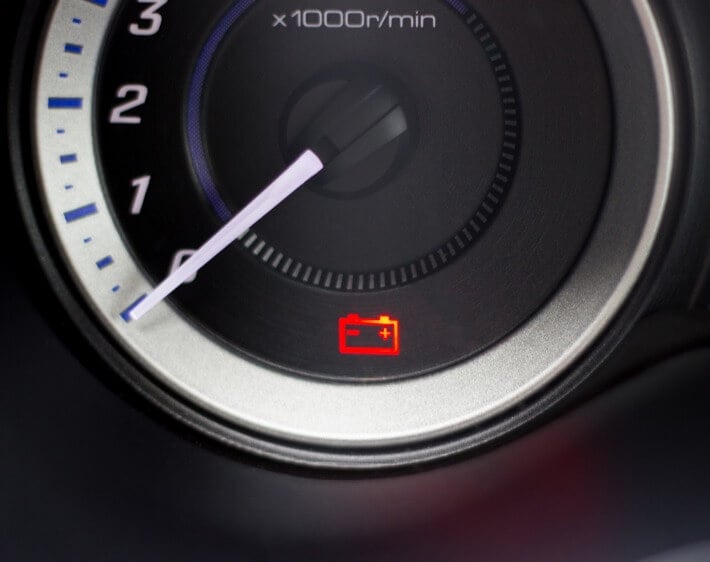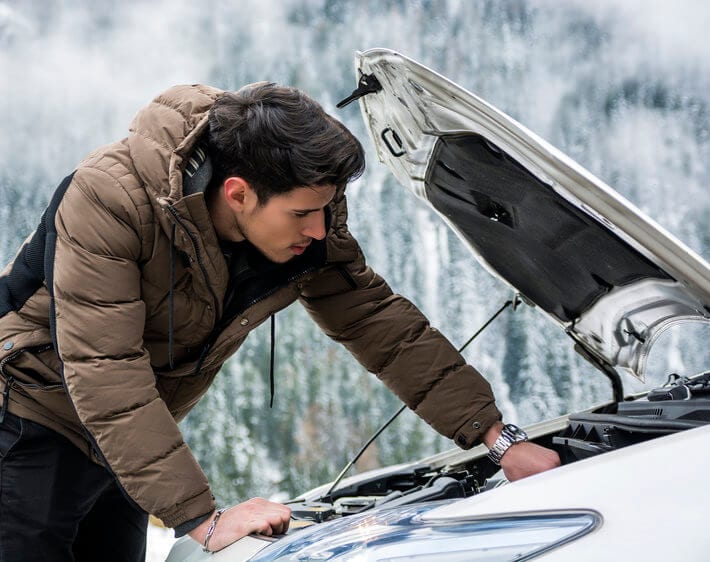Charging a dead car battery is a bit more complex (and potentially more dangerous) than charging your smartphone. You don't want to get shocked or accidentally touch battery acid. You also don't want to get stuck with a dead battery (again) if you don't let the battery charge long enough. Follow along to learn how to charge a car battery safely and how long to let your car battery charge.
As you read, remember that you're not alone out there on the road. Firestone Complete Auto Care is only a phone call away. Our Roadside Assistance folks are available 24/7 for jumpstarts, tows, and more.
What Does a Car Battery Do
Before we charge ahead, you should know what a car battery does. It serves two purposes:
1. It gives your car the power it needs to start.
The battery delivers voltage to the starter by transforming chemical energy into electrical energy.
2. It keeps your car running.
The car battery provides a steady stream of voltage to keep your engine and accessories running (like your radio, headlights, and any onboard computers).
When your battery is too weak or old, it can't do either of these things. You might need to charge your car battery if your engine is sluggish or slow to start, or if your battery is completely dead.
Beyond starting your car, charging your battery can help clue you in to whether or not it's time for a new one. For example, leaving an interior light on overnight will drain your battery, but if the battery is "healthy" then it should quickly recharge. A battery that needs to be replaced, however, won't hold a charge or will need to be recharged multiple times.
What to Do Before Charging a Battery
Now, let's get into the nitty-gritty. Start with these five steps before you try to charge or jumpstart a car battery.
1. Refer to your manual.
Every car is different and your manufacturer might have specific instructions for your make and model.
2. Be safe.
Make sure you're charging the battery in an area where there aren't any flames, sparks, or smoke. Also, take off any jewelry, as it can be a safety hazard. Additionally, slip on safety gloves and glasses.
3. Sniff around.
Do you smell something that reminds you of rotten eggs? If so, the battery might be leaking dangerous gas and you should not try to charge the battery. Stay away from the car, get it towed, and let a professional take a look.
4. Check the heat.
Heat rising from the battery case might mean it's been working harder than it should. Keep the hood up and let the battery cool before trying to charge it.
5. Look for corrosion.
Generally, corrosion looks like a greenish, crusty substance around your battery ports. It's a product of battery acid fumes coming into contact with the air—and it’s pretty common in most lead-acid batteries. However, it can compromise your car's electrical system and make it harder for the battery to receive the charge. You can remove the corrosion by cleaning it up with a brush and a paste-like mixture of water and baking soda.
How to Use a Portable Car Battery Charger
Once you've prepped your battery, you’re ready for action! If you’re fortunate enough to have a battery charger in your trunk or you have access to one, take these steps. (You can find basic portable car battery chargers at many auto parts stores for as little as $25.) Note that depending on the situation (and type of charger) you can use the charger to quickly jumpstart or fully recharge your battery.
1. Connect the charger to the battery.
This process is similar to the one for jumpstarting a battery. First, make sure the charger and your vehicle are off. Then, attach the positive (red) clamp to the positive post on your battery.
Now attach the negative (black) clamp to a stable area on the vehicle's body, or chassis. While you can also attach the black clamp to the battery's negative terminal, it's not the safest thing to do. The battery could be leaking hydrogen gas, in which case even the smallest spark could lead to an explosion or fire.
As the Chicago Tribune notes, connecting the negative cable to the negative terminal could cause a spark. Boom.
2. Prepare the charger.
On the charger, you'll need to adjust the volts and amps. Going with lower amps will result in a longer charging period, but it may also lead to a more reliable charge. If speed is what you're looking for, though, flip the switch or turn the dial to high. Just be sure to follow the directions that come with the charger and any guidance offered in your owner's manual.
3. Turn on the charger.
If your charger needs to be plugged into a power supply, make sure it is. If not, flip it on and let it do its thing. Depending on the type of charger you have, it may stop automatically once the battery's full or it may power off after a set period.
4. Disconnect the charger.
After the battery has regained its car-starting powers, turn off and if needed, unplug the charger from its power source. Time to detach the clamps! It may sound counterintuitive, but this should be done in reverse order—the negative (black) clamp should be the first one you remove, followed by the positive (red) clamp.
How to Jumpstart a Car Battery
If you don't have access to a battery charger, you'll need to know how to charge a car battery without one. Jumper cables are going to be your best bet. You can check out our full instructions for properly jumpstarting your car or follow the steps below.
1. Phone a friend.
You'll need assistance from another vehicle (one with a good battery) if you're going to jumpstart your car. Try and park the cars facing each other, or as close as you can get them!
2. Turn everything off.
The car engines, along with the radio and any other power-hungry components, should not be running. All of the power should be focused on the engines.
2. Begin with the positive jumper cables.
Got the jumper cables in hand? Connect the positive cable, which typically is red, to the positive terminal on the dead battery. Then attach the positive cable to the good battery. Be sure the clamps don’t come into contact with each other.
3. Connect the negative jumper cables.
Attach the negative clamp, which typically is black, to the post of the good battery. Next, connect the second negative cable to the chassis or the engine block. Usually, the best spot is somewhere on the frame of the car. Wherever you put the second clamp, it should be as far from the battery as possible.
As we mentioned previously, the battery might be emitting hydrogen gas and a small spark could lead to a fire or explosion.
4. Start the engines.
First, start the engine of the vehicle with the good battery. Then, try to start the car with the dead battery. After you've done that, rev the engine of the "good" car to increase the battery's output—giving the dead battery some extra juice. Now let the two vehicles idle for a couple of minutes.
5. Remove the cables.
Once the jump-started vehicle is running smoothly, it's time to remove the cables. Start with the negative ones first, and then the positive ones. That’s the opposite of what you did when you began the process. Here’s the order you should follow:
- Disconnect the negative (black) clamp from the vehicle with the bad battery.
- Disconnect the negative (black) clamp from the vehicle with the good battery.
- Disconnect the positive (red) clamp from the vehicle with the good battery.
- Disconnect the positive (red) clamp from the vehicle with the bad battery.
If you’ve followed these steps properly (and the battery isn’t completely unrecoverable), the bad battery should have enough power to allow you to drive to your nearest Firestone Complete Auto Care for a free battery check.
How Long to Charge a Car Battery
Fully charging a battery with a charger could take anywhere from a couple of hours to a couple of days, depending on the strength of the charger and the battery's voltage. While a partially charged car battery will still allow you to drive your car, at least for a short distance, you run the risk of starting this process all over again if you don't wait for a full charge.
If you use jumper cables, don't turn the engine off right after the jumpstart. Instead, cruise around for at least 15 minutes so the battery can continue charging. Kill the engine too soon and you could find yourself needing another jumpstart.
If a battery is bad, it won't hold a charge—no matter how long you leave it hooked up to another car or charger.
What to Do If a Car Battery Won't Hold a Charge
If the car battery doesn't hold a charge, you'll need to tow your car to a place that can fix the issue. It's time for a new car battery. Thankfully, with more than 1,700 locations across the country, your nearest Firestone Complete Auto Care isn't hard to find! Whether you pull in or get towed in, one of our trained technicians can inspect your battery and help you find the right car battery at the right price.



